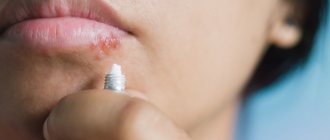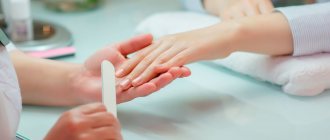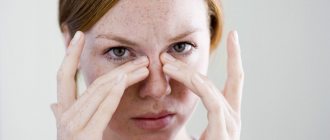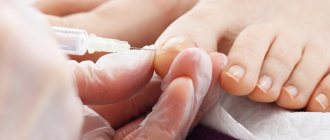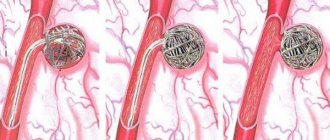What are milia?
A small formation in the place where hair begins to grow is called millet. These are dense nodules that are localized mainly on the face in areas with thin skin. They are painless, not prone to growth and inflammation. Their diameter ranges from 0.5 to 3 mm. Rarely, milia can appear on the body or in the groin area. Age category - any, but most often millet is observed in women, newborns and adolescents.
Exocrine glands are located in the dermis, their ducts are often directed to the mouth of the root part of the hair. Each of them secretes sebum, a fatty substance that is a lipid complex.
When released onto the surface of the dermis, the secretion forms a special invisible film, which consists of water and lipids, and is intended for protective functions. In addition, dead epidermal cells are shed through the base of the follicle. When the gland becomes clogged with sebum and horny scales, milia are formed. The formation is called millet because of its similarity to millet grain and its color (white, yellowish).
Causes
Contrary to popular belief, milia are not acne , which are typical for people at puberty.
Attention! These formations are equally common in both young and older people. Formations arise for the following reasons:
- too much sun exposure ;
- disorders in the hormonal system;
- poor or unhealthy diet ;
- genetic predisposition;
- lack of vitamins;
- disturbance in the metabolic ;
- alcohol abuse;
- smoking;
- clogging of pores when using cosmetics;
- liver diseases.
Also, the appearance of such formations can be caused by improper functioning of the gastrointestinal tract and diseases of the pancreas.
Reasons for appearance
Whiteheads can be primary or secondary. In the first case, their appearance is associated with hyperfunction of the sebaceous glands and insufficiency of lipid synthesis. Depending on age and other characteristics, several reasons for the formation of primary retention cysts can be identified:
- In newborns. Sebaceous glands form in the third month of fetal development. In case of disruption of sebum regulation and separation of keratinized particles, millet appears. As a rule, after 1 – 2 weeks, a child’s whiteheads disappear on their own.
- Increased function of the alveolar glands and changes in the chemical composition of sebum - oily seborrhea, which is the source of the development of whiteheads. This disease is also characterized by other types of acne - black, vulgar, atheroma.
- Hormonal imbalance with increased androgen levels. All diseases associated with hormones can lead to the formation of milia - pathologies of the endocrine, reproductive system, adrenal glands, pancreas, and gastrointestinal tract.
- Hyperkeratosis is a disease caused by a lack of vitamin A, environmental problems, work in hazardous industries, and intoxication. Characterized by thickening of the stratum corneum of the epidermis.
- Metabolic disorder. Whiteheads appear due to excess weight and non-compliance with the principles of a healthy diet.
- Lack of hygiene and selection of low-quality cosmetics. Caring for oily skin has its own characteristics. If you do not follow the rules, retention cysts may appear.
Secondary causes of millet formation are frequent stress and a sedentary lifestyle. It can also develop against the background of trauma and inflammatory processes of the skin, chronic diseases of the epidermis, for example, mechanobullous disease, lupus, sarcoidosis, and so on.
Milia on the face
Milia, which are colloquially called “milia,” appear as a result of the sebaceous glands producing too much secretion .
Such formations can be primary or secondary. Primary ones form for no apparent reason, and secondary ones are a direct consequence of skin damage (traumatic or as a result of inflammation).
The size of such formations can range from two to three millimeters .
Reference! Milia are white, dense blackheads containing sebum.
Considering that their contents do not come into contact with air, which may contain bacteria and microbes, they do not become inflamed. Although sometimes microorganisms enter through the skin, and then inflammatory processes begin .
When should you see a doctor for treatment?
In most cases, millet is harmless and only causes aesthetic inconvenience. Acne forms gradually, without discomfort or inflammation. They can be observed in the form of individual nodules, but more often they are a scattering localized on the eyelids, temples, and in the T-zone. Since the cysts are tightly sealed and have no contact with the environment, they maintain their size. But if the integrity is violated and pathogenic microorganisms enter, inflammation with pustules can develop.
Milium is easily recognized visually by a cosmetologist. But in some cases it needs to be differentiated from fibroma, flat xanthoma, or hamartoma of the eyelids.
Causes of milia
There are several factors that contribute to the formation of milia on the face of a newborn:
- intrauterine ingestion of excess amounts of enzymes and hormones transmitted directly from mother to fetus;
- clogging of the sebaceous glands and pores due to slow adaptation to internal and external environmental factors. This may be a reaction to breast milk, irritation from air components in the room, insufficient activity of internal organs and a slow response of the newborn’s immune system.
These reasons lead to the appearance of white dots on the baby’s delicate skin, which inexperienced parents may mistake for wen. In such cases, pediatricians reassure mothers and fathers, explaining that the child’s adaptation to the environment is a completely natural and physiological process.
How to get rid of milia on the face using cosmetic methods?
There are several ways to remove millet on the skin:
- Mechanical. The instrumental method involves opening the capsule - a puncture using a Vidal needle. The doctor removes the shell, then takes out the keratin contents with a Uno spoon. In this way, the blackhead is removed while preventing the appearance of new nodules.
- Electrocoagulation. A special monopolar mode is used, which allows the eel capsule to be removed using broadband electric current generated radio waves. The nodule dries out and falls off. The method is not recommended if you are prone to the formation of keloid scars.
- Laser removal of milia on the face. Due to the penetration of the energy beam into the layer of the dermis where the capsule is located, it is opened and burned out. The method is painless and is used for multiple foci of millet grass.
- Cryotherapy. Burning with liquid nitrogen. The technique is suitable for single formations.
No more than 10 nodules can be removed at a time. A crust forms at the site of exposure, which disappears after a maximum of 2 weeks. Under no circumstances should you rip it off yourself.
Regardless of the method of removing millet, it is recommended to first undergo a chemical peeling procedure. This technique allows you to get rid of dead scales of the epidermis. Small acne can be removed, while preventing the appearance of new formations.
Milia on the face: photo
In the photo below you can see what milia look like on the face. They can appear not only on the face, but also on the eyelids, under the eyes, and on the nose.
Is it possible to remove milia at home?
Carrying out the procedure for eliminating millet on your own is excluded. Squeezing, scraping, picking out the nodule can lead to an inflammatory process. When an infection occurs, atheroma, fibroma, and so on form in place of the usual harmless millet.
In addition, after self-removal, a scar or scar may form, which is much more difficult to get rid of. The only thing that can be done at home is peeling and scrubbing, but only on the recommendation of a cosmetologist and with suitable means.
Milia on the face: how to get rid of them
There are several ways to remove milia. They differ both in the complexity of the process and in cost.
Removal
Mechanical removal of milia is the simplest and most popular method, which is performed by a cosmetologist .
Before the procedure, the specialist cleanses the skin to avoid the possibility of infection, then makes a puncture and removes the contents of the acne .
This procedure should not be performed independently, since in some cases milia are very small in size, and when removed, a person can affect not only the milia itself, but also healthy tissue.
Preventing the appearance of milia on the face
Measures to prevent the formation of whiteheads on the skin:
- proper and regular hygiene;
- routine examinations with specialized doctors;
- proper nutrition;
- active lifestyle;
- maintaining mental health;
- proper skin care;
- use of high-quality cosmetics and care products intended for a specific skin type;
- using skin protection from ultraviolet radiation with SPF cream (index 30-50 depending on the time of year).
As a preventative measure, you can prepare your own mild cleansing products:
- Soap and soda. Mix the two components and apply exclusively to the areas where whiteheads form.
- Sour cream or curdled milk with raw pumpkin, crushed into pulp. This product also improves skin color and provides freshness.
- Herbal infusions. Pharmacy chamomile and calendula are suitable. You can use herbs separately, but it is better to make a mixture in a ratio of 1 to The product eliminates inflammation, cleanses and refreshes the skin.
- Crushed oatmeal flakes mixed with cranberries, lemon, sour cream or sea salt.
After peeling, be sure to thoroughly moisturize the skin and apply a nourishing cream. The procedure can be performed no more than 2 times a week.
What not to do
Some parents may be overzealous in their efforts to cleanse their baby's skin of various bumps and rashes. The measures they take may be completely unnecessary. Such manipulations include:
use of products containing various types of alcohols. they can damage the baby's skin, causing itching, dryness, peeling and even chemical burns. Such preparations include not only lotions for cleansing the skin of adults, but also alcohol solutions of brilliant green, fucorcin and iodine;- applying moisturizing creams, oils or other products that are highly oily to the baby’s skin. These manipulations will lead to further clogging of the pores and accelerate the formation of not only harmless milia, but also other inflammatory skin processes;
- attempts to squeeze out milia or pierce them with needles. Attempts to mechanically remove the problem can lead to secondary infection and infection.
Ill-considered actions of parents can lead to the fact that a harmless physiological process of addiction turns into a dangerous acute or chronic disease. When milia form, the best thing mom and dad can do is leave the baby’s skin alone and not interfere with its adaptation to the new world.
Kuznetsova Irina, medical observer
36,108 total views, 1 views today
( 41 votes, average: 4.29 out of 5)
Dühring's dermatitis, or dermatitis herpetiformis: symptoms and treatment
Sun allergy – photodermatitis
Related Posts
How to care for oily skin?
Since milia are mainly characteristic of the dermis, which is prone to excessive sebum production, proper care will help prevent their formation. Recommendations for caring for oily skin:
- Cleansing. It must be carried out in such a way that the protective barrier of the skin is not damaged. Products with mild formulas will help get rid of excess fat, but will not upset the balance. It is not recommended to use regular soap for cleansing; formulations in the form of foam or gel are more suitable. Products may contain calendula, chamomile, aloe, and hyaluronic acid. The main thing is to always remove makeup before going to bed.
- Toning. Helps restore acid-base balance and eliminate the effects of environmental exposure. Tonics against blackheads, millet and oily shine mattify well, gently cleanse the skin, moisturize and refresh. They never contain alcohol and contain thermal water and other components.
- Exfoliation. Oily skin needs a scrub that provides a drying, soothing, cleansing effect. The procedure is aimed at eliminating keratinized scales.
- Hydration. In formulas for oily skin, the ratio of components is more water, less oil. These are light cream textures with a matting effect.
Getting rid of milia is not difficult, but this procedure should be entrusted to a professional cosmetologist. You can independently carry out only preventive measures aimed at preventing the formation of millet grass.
How to get rid of milia
Pediatricians recommend not paying attention to miles in infants, since their appearance is a normal process of skin adaptation. Most likely, the upper layer of the baby's epidermis will clear itself within a few weeks, as soon as the child's body gets used to the new air, food and lifestyle. In some children, milia can persist for up to 6 months, and then they disappear as quickly as they form, leaving no scars or marks on the delicate skin.
In cases where parents are too concerned about the child’s appearance and health, doctors advise using simple and safe products that will not only help cleanse the child’s skin, but will also have an additional antiseptic and immunostimulating effect.:
Add a decoction of beneficial herbs to the bathtub - string and chamomile. This will help soothe the skin, stimulate regeneration and renewal processes, cleanse the upper layer of the epidermis and allow the baby’s pores to open more freely. You can gently wipe your child's skin with a cotton pad soaked in chamomile solution before bedtime.- A classic remedy known since the times of the Soviet Union - a slightly pink solution of potassium permanganate - has a similar effect. This active cleansing substance can be easily purchased at any pharmacy.
- In some cases, simply wiping the baby’s face with a cotton swab dipped in clean boiled water helps.
note
It is important to remember that using herbs, plant extracts or ready-made infusions for bathing babies can lead to an allergic reaction due to the high content of essential oils. Before using them, it is better to consult your pediatrician.

